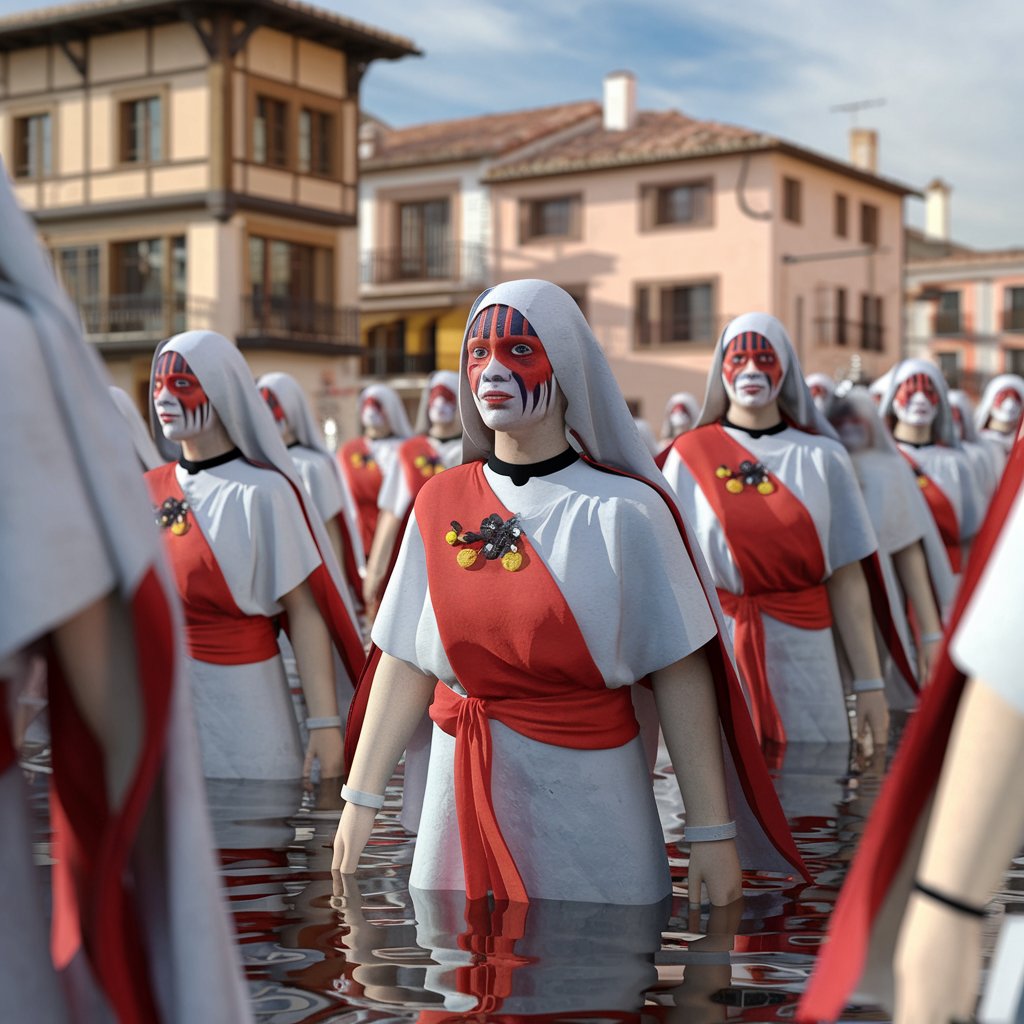
The Festival of Near-Death Experiences – Spain’s La Fiesta de Santa Marta de Ribarteme
Ever wondered what it’s like to stare death in the face and then throw a party about it? Welcome to La Fiesta de Santa Marta de Ribarteme, Spain’s surreal Festival of Near-Death Experiences. Held in a tiny Galician town, this eerie celebration is all about cheating death and thanking Santa Marta, the saint who supposedly keeps the Reaper at bay. It’s a day where coffins aren’t just for the dead, and the living pay tribute to the thin line that separates life from death.
A Peculiar Tradition
Let’s take a trip to Las Nieves, a small village nestled in Spain’s Galicia region, where the macabre and the miraculous meet every year. The Festival of Near-Death Experiences is an annual event that’s as mysterious as it is unique. While most people prefer to avoid anything that even remotely resembles death, the folks in this village embrace it. The festival is a bizarre mix of the sacred and the strange, where gratitude and morbidity go hand in hand.
So, what’s this all about? Imagine this: people who have had a brush with death, be it through illness, accident, or any other life-threatening event, gather here to give thanks. And they don’t just say a little prayer – they climb into coffins and are carried through the streets by their loved ones. Yeah, you read that right. It’s a procession of the not-quite-dead, where the coffins aren’t for mourning but for celebrating life, or rather, the continuation of it.
The Procession of the Living Dead
The day starts early, with the town coming alive with the sound of church bells and the shuffle of feet. The atmosphere is thick with anticipation, a strange mix of somber reflection and festive excitement. As the morning sun rises, the procession begins. The stars of the show are the lucky – or perhaps unlucky – individuals who’ve come face to face with their mortality and lived to tell the tale. Draped in white, they lie inside wooden coffins, and their families, friends, and neighbors carry them through the narrow, winding streets.
It’s a sight that sends shivers down your spine. The coffins, usually open, reveal the pale faces of those inside, looking more ghostly than alive. The onlookers, a mix of locals and curious visitors, line the streets, some clutching candles, others whispering prayers. The whole scene is both haunting and mesmerizing, a stark reminder of how close we all are to the edge.
Santa Marta – The Saint of Second Chances
But what’s a festival without a saint to honor? In this case, it’s Santa Marta de Ribarteme, the patron saint of resurrection. She’s the one who supposedly steps in when death comes knocking, giving those on the brink a second chance. The procession winds its way to the local church, where a statue of Santa Marta stands, surrounded by offerings of gratitude – flowers, candles, and even personal mementos.
Here, the coffin-bearers, now more like participants in a strange ritual than mourners, offer their thanks. The church fills with the sound of hymns, prayers, and the occasional sob – not of sorrow, but of relief. It’s a deeply emotional moment, as those who’ve survived brush up against their mortality once more, this time in a more symbolic sense. For them, this isn’t just a festival; it’s a moment to reflect on the fragility of life and the strange blessing of a second chance.
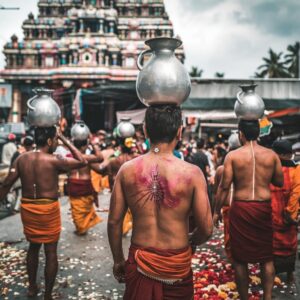
A Mix of Reverence and Revelry
Once the procession and the church service are over, you might think the tone would stay somber. But this is Spain, after all, where even a festival about near-death experiences can’t be all doom and gloom. The streets of Las Nieves soon fill with music, laughter, and the smells of delicious food. The locals break out into celebrations, feasting and dancing, as if to shake off the heavy atmosphere that the morning’s events brought on.
It’s a curious contrast – the solemnity of the morning giving way to the lively, almost defiant celebrations in the afternoon. But maybe that’s the point. After all, what better way to celebrate life than by embracing its joys after acknowledging its inevitable end?
A Ritual Steeped in Mystery
The Festival of Near-Death Experiences isn’t just a quirky local tradition; it’s steeped in centuries of mystery and belief. The origins of the festival are shrouded in legend, with stories of miraculous recoveries and divine interventions passed down through generations. Some say it all started with a vow made by those who narrowly escaped death, promising to walk the streets in a coffin if they were spared. Others believe it’s a tradition that’s evolved over time, blending ancient pagan rites with Christian beliefs.
Whatever the true origins, the festival has persisted, a testament to the human desire to understand and come to terms with mortality. In a world that often shies away from the subject of death, this small village in Galicia has found a way to confront it head-on – with a mix of reverence, gratitude, and yes, even a bit of celebration.
The Enigmatic Appeal
So, why do people flock to Las Nieves to witness this eerie spectacle? Perhaps it’s the thrill of seeing something so out of the ordinary, so far removed from the usual ways we think about death. There’s something strangely alluring about a festival that puts mortality front and center, that doesn’t shy away from the darker aspects of life. It’s a reminder of the thin line between life and death, and the strange ways we humans cope with that knowledge.
For the participants, the festival is a deeply personal experience. It’s not just about the public spectacle; it’s about the private moments of reflection, the gratitude for life, and the acknowledgment of death’s ever-present shadow. It’s a ritual that, while strange to outsiders, carries profound meaning for those involved.
The Modern-Day Festival
In recent years, La Fiesta de Santa Marta de Ribarteme has gained more attention, drawing visitors from around the world who are curious to see this peculiar event for themselves. The influx of tourists has added a new dimension to the festival, with more people coming to Las Nieves every year to witness the procession, visit the church, and take part in the celebrations.
However, despite the growing attention, the festival has managed to retain its authenticity. The core of the event – the procession of the living dead, the offerings to Santa Marta, the mix of reverence and revelry – remains unchanged. It’s a festival that’s deeply rooted in tradition, yet open to the curious gaze of outsiders.
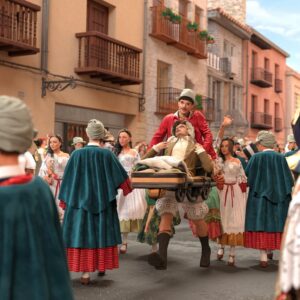
Tips for Attending the Festival
If you’re thinking of visiting Las Nieves to experience the Festival of Near-Death Experiences for yourself, here are a few things to keep in mind:
- Respect the Tradition: While the festival might seem unusual, it’s a deeply important event for the locals. Be respectful of the rituals and the people participating in them.
- Arrive Early: The village gets crowded on the day of the festival, so it’s a good idea to arrive early to find a good spot to watch the procession.
- Be Prepared for a Range of Emotions: The festival is an emotional experience, even for spectators. Don’t be surprised if you find yourself feeling a mix of awe, unease, and even joy as you watch the events unfold.
- Enjoy the Celebrations: After the procession, the mood lightens, and there’s plenty of food, music, and dancing to enjoy. Take the time to soak in the festive atmosphere.
The Lasting Impact
The Festival of Near-Death Experiences leaves a lasting impression on those who witness it. It’s a festival that challenges the way we think about life and death, that forces us to confront the reality of our mortality in a way that’s both unsettling and strangely uplifting. It’s a reminder that life is fragile, that death is inevitable, but that there’s still something to celebrate in the fact that we’re here, breathing, alive.
For the people of Las Nieves, this Festival of Near-Death Experiences isn’t just a yearly event – it’s a part of who they are. It’s a way of connecting with their past, their faith, and their community. It’s a ritual that, while odd to outsiders, carries deep meaning and significance. And for those who’ve been through a near-death experience, it’s a chance to give thanks, to celebrate life, and to acknowledge the shadow of death that looms over us all.
So, if you’re ever in Spain and looking for something truly unique, make your way to Galicia in late July. Witness the procession, feel the weight of history and tradition, and join in the celebrations. Because in Las Nieves, life and death dance together in a strange, beautiful, and unforgettable festival.


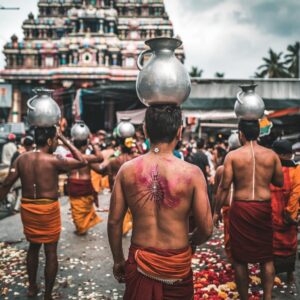
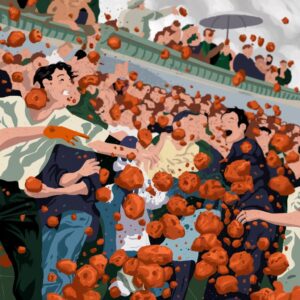
Average Rating